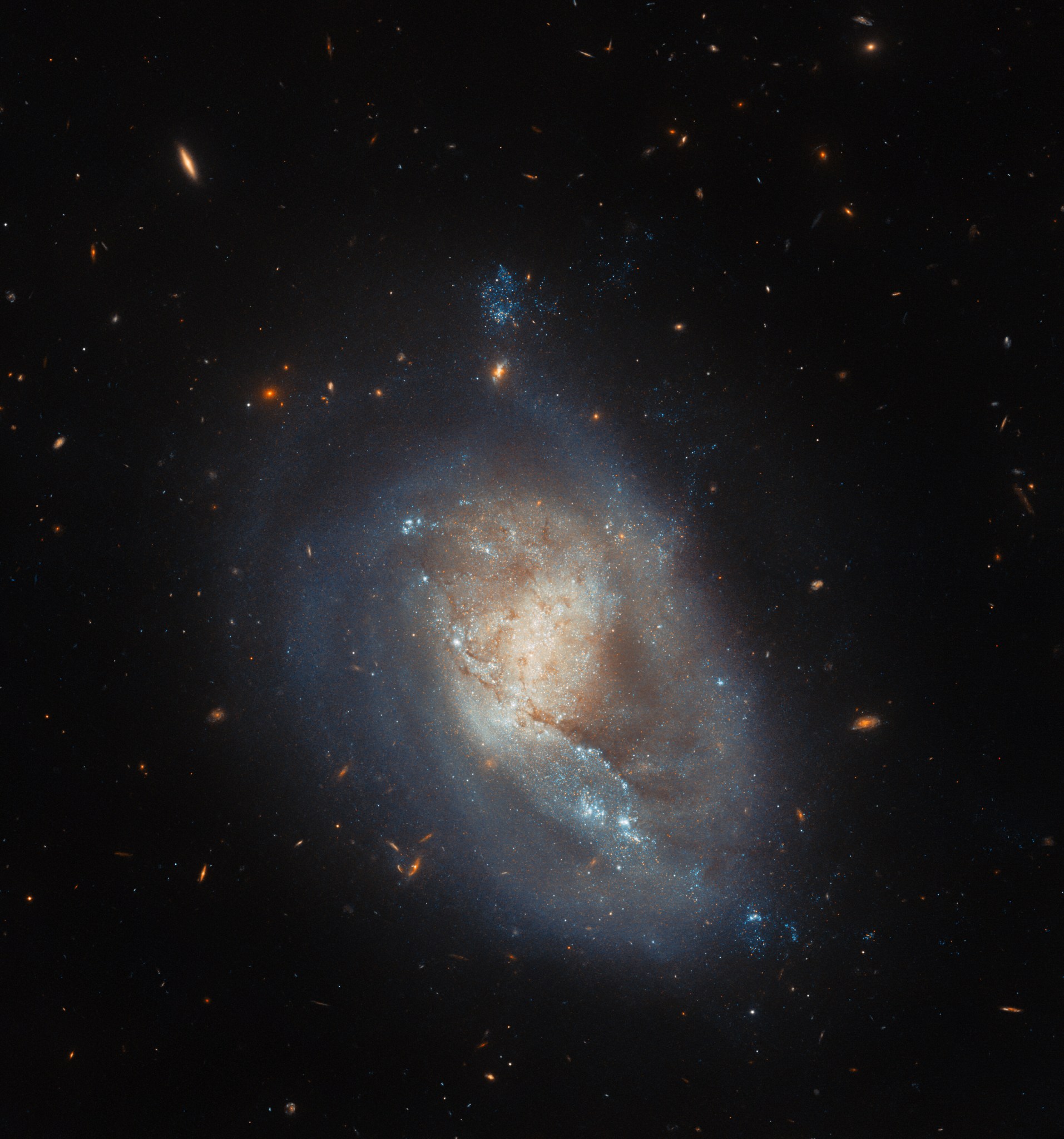This NASA/ESA Hubble Space Telescope image features IC 3476, a dwarf galaxy that lies about 54 million light-years from Earth in the constellation Coma Berenices. While this image does not look very dramatic – we might say it looks almost serene – the actual physical events taking place in IC 3476 are highly energetic. In fact, the little galaxy is undergoing a process called ram pressure stripping that is driving unusually high levels of star formation in regions of the galaxy.
The gas and dust that permeates space exerts pressure on a galaxy as it moves. This resistance, called ram pressure, can strip a galaxy of its star-forming gas and dust, reducing or even stopping the creation of new stars. However, ram pressure can also compress gas in other parts of the galaxy, which can boost star formation. This may be happening in IC 3476. The galaxy appears to have absolutely no star formation along its edges, which bear the brunt of the ram pressure stripping, but star formation rates deeper within the galaxy are noticeably above average.
Text credit: European Space Agency (ESA)
Media Contact:
Claire Andreoli
NASA’s Goddard Space Flight Center, Greenbelt, MD
claire.andreoli@nasa.gov


























